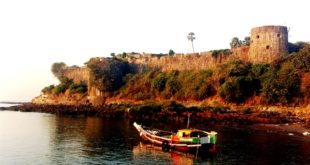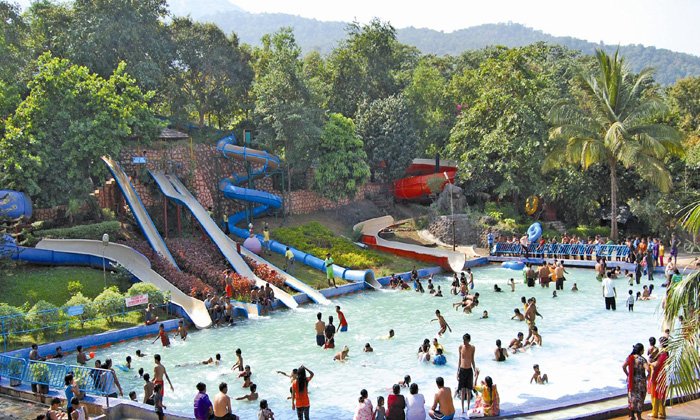Elephanta Caves : An Ancient Treasure Near the Gateway of India, Mumbai
To reach Elephanta Caves one has to take a ferry from Gateway of India, Mumbai, but the actual location of the caves falls in the district of Raigarh. A enthralled ride of seven kilometers, which takes about 50 minutes, is full of dreamy visuals of a sea journey, all around.
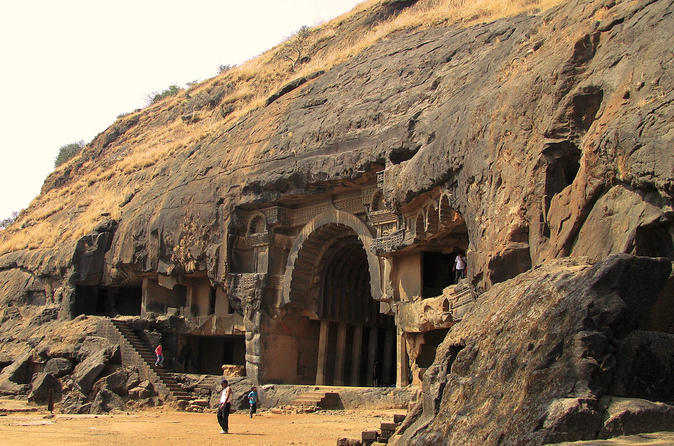
The Elephanta Caves are one of the oldest rock cut structures in the country and are the perfect expressions of archaic Indian art associated to the cult of Lord Shiva. Believed to be the abode of Lord Shiva, the Elephanta Caves are an personification of Hindu Cave culture and are a unique testimony to an ancient civilization. The origins of the Elephanta Caves have been doubted time and again, though the sculptures and the art itself about the time from when they could have been popular-6th or the 8th century. The island on which the caves are built was originally known as Gharapuri, and the Portuguese retitled it as Elephanta Island when they discovered a large stone structure of an Elephant on the island. The temple was primarily built for the worship of Lord Shiva and ‘Shivaism’. However, it is believed that the Portuguese destroyed many other structures and even used the idols of Hindu Gods within the caves for target practice. Today, the site is a popular tourist hot-spot.
The island has two groups of caves in the rock-cut architectural style. The caves are hewn from solid basalt rock. All caves were painted in the past, but only traces remain. The larger group of caves, which consists of five caves on the western hill of the island, is well known for its Hindu sculptures. The primary cave, numbered as Cave 1, is about 1 mile (1.6 km) up a hillside, facing the ocean. It is a rock-cut temple complex that covers an area of 60,000 square feet (5,600 m2), and consists of a main chamber, two lateral chambers, courtyards, and subsidiary shrines. It is 39 metres (128 ft) deep from the front entrance to the back. The temple complex is the abode of Shiva, depicted in widely celebrated carvings which reveal his several forms and acts.

The island has two groups of caves in the rock-cut architectural style. The caves are hewn from solid basalt rock. All caves were painted in the past, but only traces remain. The larger group of caves, which consists of five caves on the western hill of the island, is well known for its Hindu sculptures. The primary cave, numbered as Cave 1, is about 1.6 km up a hillside, facing the ocean. It is a rock-cut temple complex that covers an area of 60,000 square feet, and consists of a main chamber, two lateral chambers, courtyards, and subsidiary shrines. It is 39 metres (128 ft) deep from the front entrance to the back. The temple complex is the abode of Shiva, depicted in widely celebrated carvings which reveal his several forms and acts.
At the entrance of the main cave, Cave No. 1, there are four doors, with three open porticoes and an aisle at the back. Pillars, six in each row, divide the hall into a series of smaller chambers. The roof of the hall has concealed beams supported by stone columns joined together by capitals. The cave entrance is aligned with the north–south axis, unusual for a Shiva shrine (normally east–west). The northern entrance to the cave, which has 1,000 steep steps, is flanked by two panels of Shiva believed to be dated to the Gupta period. The left panel depicts Yogishvara (The Lord of Yoga) and the right shows Nataraja (Shiva as the Lord of Dance). The central Shiva shrine is a free-standing square cell with four entrances, located in the right section of the main hall. Smaller shrines are located at the east and west ends of the caves. The eastern sanctuary serves as a ceremonial entrance.
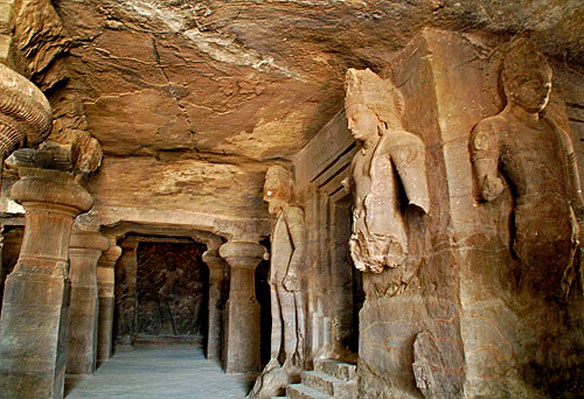
The carving on the south wall to the east of the portico depicts Shiva and Parvati seated on their abode Mount Kailash. The four-armed Shiva is seen with a crown and a disc behind it (all damaged), the sacred thread across his chest, and a dressing gown covering up to the knee. Parvati, dressed in her finery with her hair falling to the front, looks away. Behind her at the right is a woman attendant holding the child, identified with her son Kartikeya, the war-god. Many male and female attendants are seen behind the main figures.
The central shrine is a free-standing square cell, with entrances on each of its sides. Each door is flanked by two dvarapalas (gate keepers). The Linga, the symbol of Shiva in union with the Yoni, and the symbol of Parvati together symbolize the supreme unity that is deified by the shrine. The Linga is set on a raised platform above the floor of the shrine by 6 feet (1.8 m). Six steps lead to this level from the floor level. The height of the eight dvarapalas varies from 14.833–15.167 feet. All are in a damaged condition except those at the southern door to the shrine. The southern gate statue has many unusual features – unusual headgear; a large skull above the forehead; lips parted with protruding teeth; statues adorned with a single bead necklace, earrings, plain twisted armlets and thick wristlets; a stooped right shoulder; a globe held at navel level; the robe is held at the right thigh by the left hand, and the legs are shapeless.
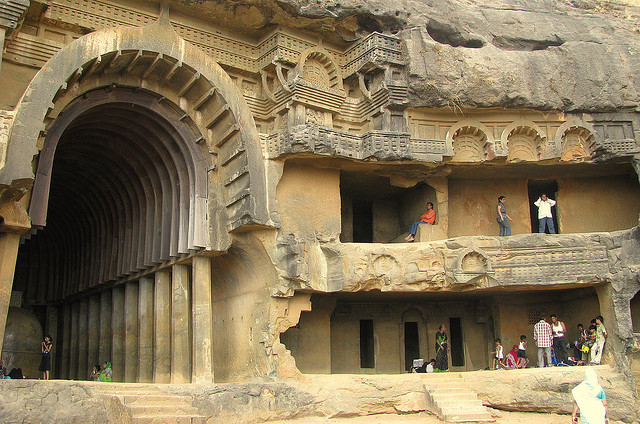
A small island just off the coast of the Arabian Sea may be not be an apt place for shopping for souvenirs, but you will be pleasantly surprised with the availability of local Elephanta souvenirs which you can take back home. A short walk uphill will bring you to the local flea market. A women market, this little shopper’s paradise offers sculptures made of marble, jewelery, clothes, paintings of Lord Shiva and many amazing items of wood work. If you are collecting Indian artifacts, then there is no better place to shop for souvenirs than the Elephanta Caves. While the prices are a bit upper side, it always works to bargain, especially at unique and beautiful places like the Elephanta Caves.
The UNESCO has declared Elephanta Caves, the status of world Heritage Site and granted an amount of US$ 1, 00,000 for upkeep and restoration of these ancient caves. The threats to Elephanta Caves have been identified as in the forms of developmental pressures (mainly due to its location within the Mumbai harbor, due to growth of population of the communities residing on the island, industrial growth of the port facilities close to the island, no risk preparedness plan to address natural calamities such as earthquake, cyclones and terrorist attacks, unsustainable tourism and tourist facilities on the island, as well as poor management of the heritage monument.
How to Reach
You can reach Chatrapati Shivaji Terminus or Churchgate Station of Mumbai Suburban Railways. From there you can get a Bus or Taxi which will not take more than 10-15 mins to drop you to Gateways of India. You can easily reach Elephanta Caves by taking a ferry from Gateway of India which is available at a very nominal price.
You may also like to Read :
 Amazing India Blog Know India Better
Amazing India Blog Know India Better
